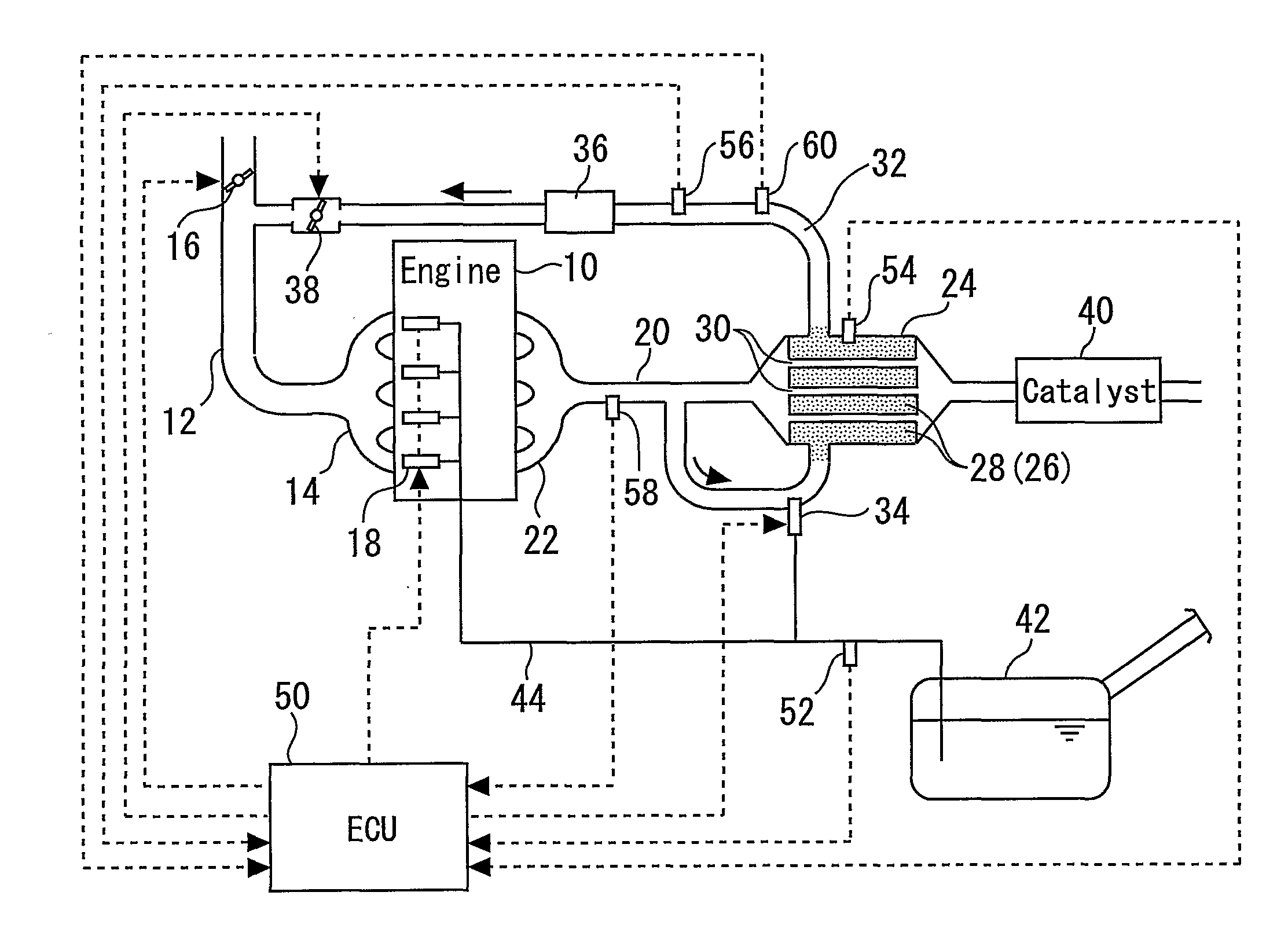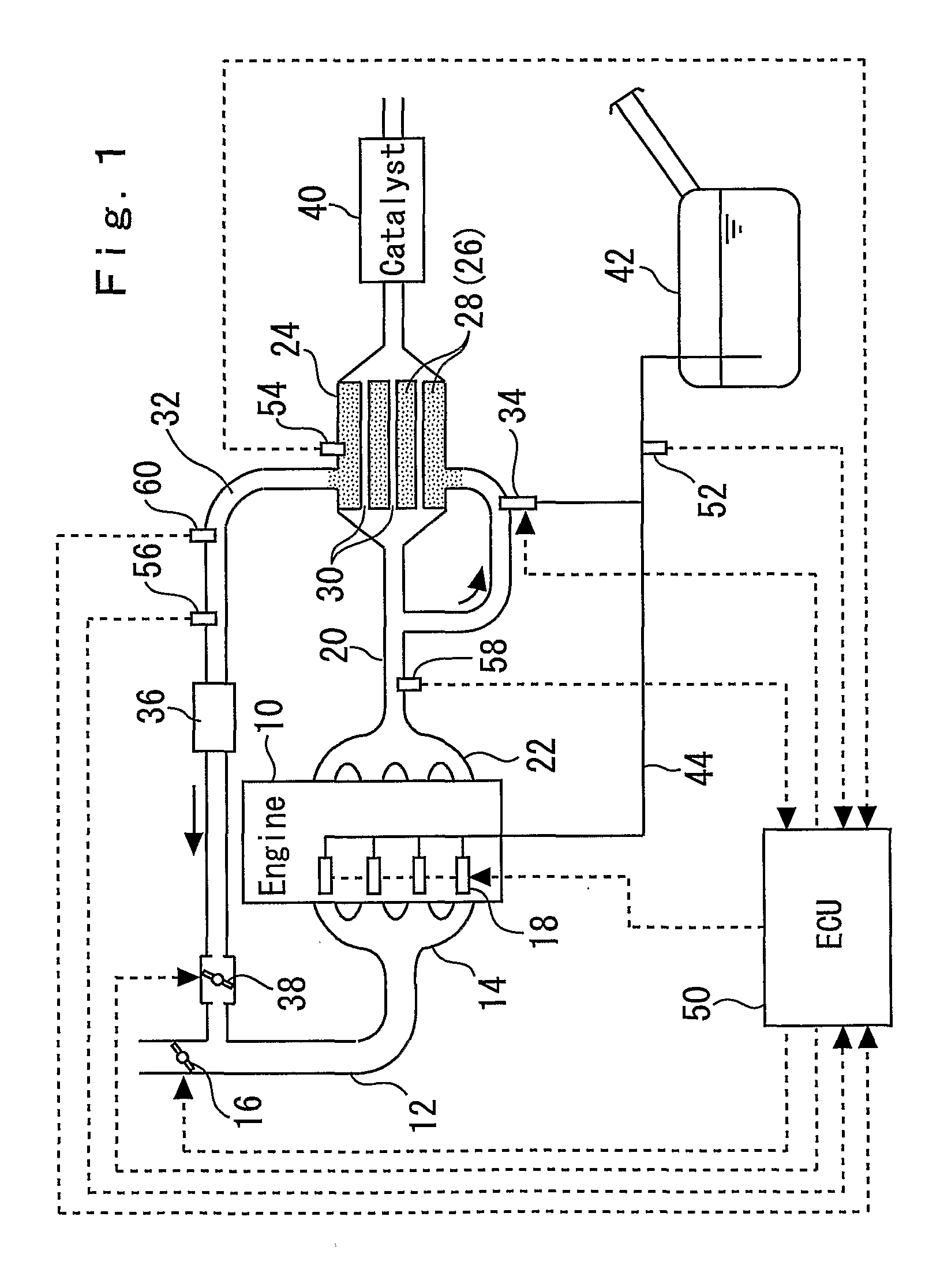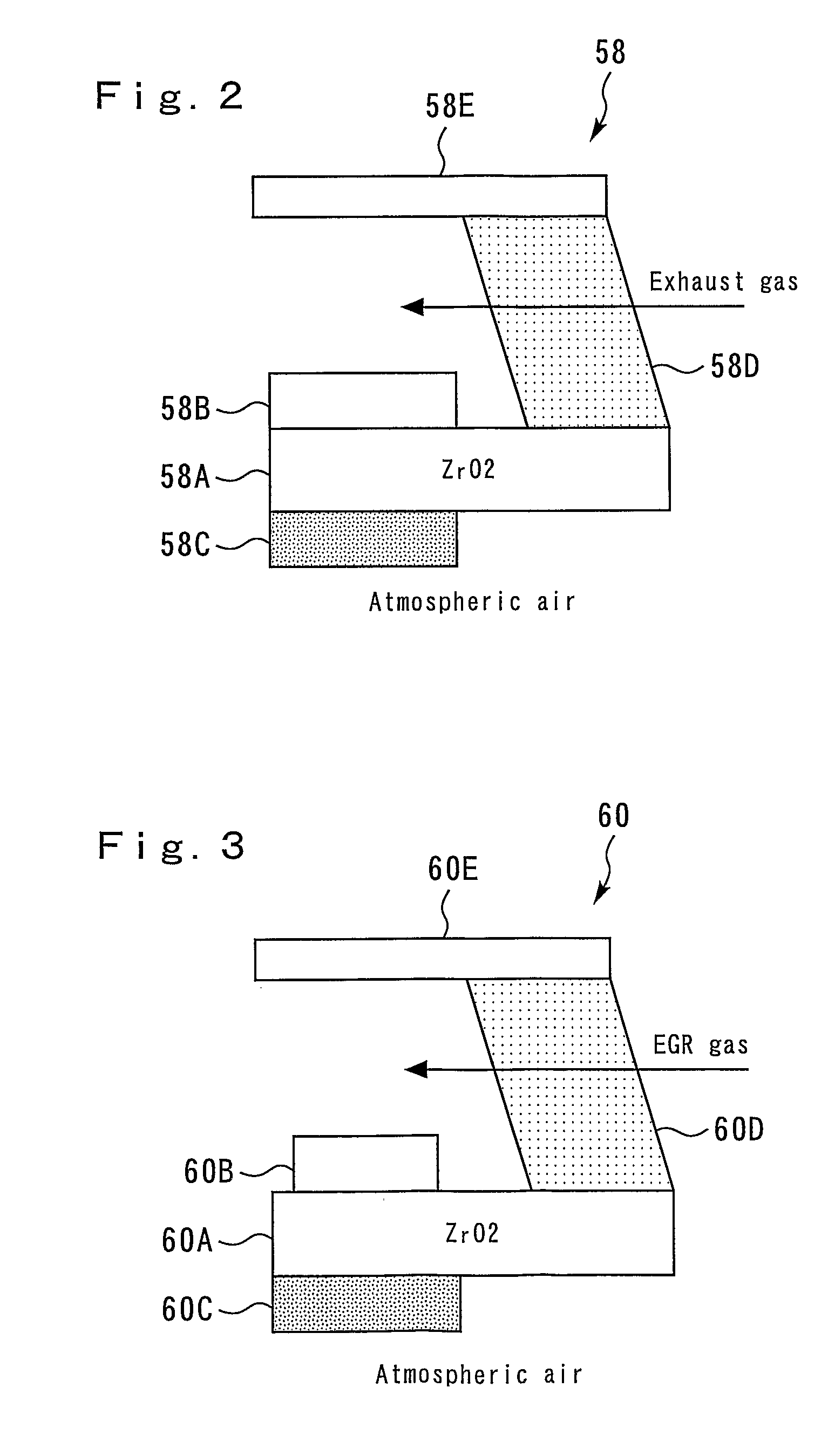Fuel reforming apparatus
a technology of fuel reforming apparatus and concentration sensor, which is applied in the direction of gas modification by gas mixing, gaseous engine fuel, hydrogen/synthetic gas production, etc., can solve the problems of reducing detection accuracy, small size, and inexpensive concentration sensor that could be mounted in the prior art fuel reforming apparatus, and achieves accurate calibration of sensor output characteristics, continuous detection, and high accuracy
- Summary
- Abstract
- Description
- Claims
- Application Information
AI Technical Summary
Benefits of technology
Problems solved by technology
Method used
Image
Examples
first embodiment
Configuration of First Embodiment
[0067]A first embodiment of the present invention will now be described with reference to FIGS. 1 to 11. FIG. 1 is an overall configuration diagram illustrating the configuration of a system according to the first embodiment. The system according to the present embodiment includes, for instance, a multi-cylinder internal combustion engine 10. This internal combustion engine 10 operates on a fuel mixture of alcohol and gasoline. The present embodiment assumes that a fuel mixture of ethanol and gasoline is used.
[0068]An intake pipe 12 of the internal combustion engine 10 is connected to an intake port of each cylinder through an intake manifold 14. An electric throttle valve 16 is installed in the middle of the intake pipe 12 to adjust the amount of intake air. The intake port of each cylinder is provided with a main fuel injection valve 18, which is composed, for instance, of a solenoid valve for fuel injection.
[0069]An exhaust pipe 20 of the internal...
second embodiment
[0169]A second embodiment of the present invention will now be described with reference to FIG. 12. The second embodiment uses the same system configuration (FIG. 1) as the first embodiment, but differs from the first embodiment in the structure of the downstream air-fuel ratio sensor.
[0170]The downstream air-fuel ratio sensor 70 according to the second embodiment is similar to the counterpart according to the first embodiment in that the former includes a detection element 70A, electrodes 70B, 70C, a diffusion layer 70D, and a housing 70E. However, the diffusion layer 70D is made of a denser material than the diffusion layer 58D of the upstream air-fuel ratio sensor 58. Therefore, the diffusion layer 70D is less permeable than the diffusion layer 58D of the upstream air-fuel ratio sensor 58.
[0171]As a result, oxygen and hydrogen are less likely to be supplied to one side surface of the detection element 70A than in the case of the upstream air-fuel ratio sensor 58. This reduces the...
PUM
 Login to View More
Login to View More Abstract
Description
Claims
Application Information
 Login to View More
Login to View More - R&D
- Intellectual Property
- Life Sciences
- Materials
- Tech Scout
- Unparalleled Data Quality
- Higher Quality Content
- 60% Fewer Hallucinations
Browse by: Latest US Patents, China's latest patents, Technical Efficacy Thesaurus, Application Domain, Technology Topic, Popular Technical Reports.
© 2025 PatSnap. All rights reserved.Legal|Privacy policy|Modern Slavery Act Transparency Statement|Sitemap|About US| Contact US: help@patsnap.com



